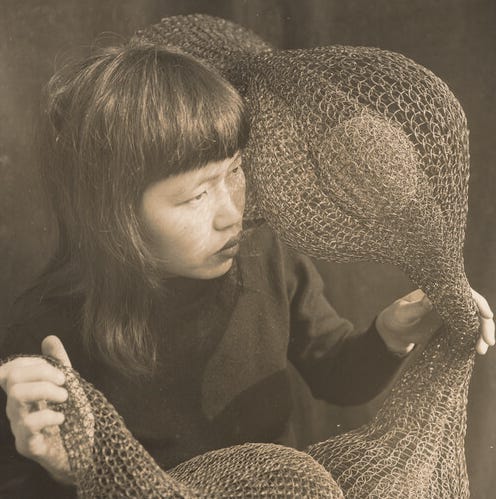Marie-Guillemine Benoist, Psyche Bidding Her Family Farewell (detail), 1791. Oil on canvas, 43 3/4 x 57 1/8 in. (111 x 145 cm). Fine Arts Museums of San Francisco, Museum purchase, John A. and Cynthia Fry Gunn; Phoebe Cowles and Robert Girard; Margaret and William R. Hearst III; Diane B. Wilsey; Barbara A. Wolfe; The Jay and Clara McEvoy Trust; The Michael Taylor Trust; The Margaret Oakes Endowment Income Fund; The Harris Family; Ariane and Lionel Sauvage; and an anonymous donor, 2022.2
Last March, the newly acquired painting Psyche Bidding Her Family Farewell, 1791, by Marie-Guillemine Benoist (1768 – 1826), went on view at the Legion of Honor. In celebration of Women’s History Month and the painting’s one year anniversary at the Legion, here are five things to know about the revolutionary artist behind this rare artwork.
1. She was the first woman to show a history painting at the Paris Salon.
Before Benoist exhibited Psyche Bidding Her Family Farewell at the Paris Salon in 1791, only members of the Royal Academy had been allowed to exhibit. While women could join and submit still lifes or portraits — genres considered imitative and therefore inferior — history painting was reserved for the creative powers of men. But Benoist saw herself as a history painter, so when the Revolution flung open the doors of the Salon to nonmembers, she jumped at the chance to exhibit.
2. She trained with two of the best.
Benoist had her early training in the studio of Elisabeth Louise Vigée-LeBrun (1755 – 1842), a wildly successful portraitist and rare female member of the Royal Academy. When Vigée-LeBrun closed her studio, Benoist was accepted as one of just three female students under Jacques-Louis David (1748 – 1825). Beyond being known as the greatest history painter of the age, David also trained a whole generation of Neoclassical artists (including Girodet, Gérard, Gros, and Ingres). At the Legion, Benoist has been reunited with her first teacher, as Psyche Bidding Her Family Farewell hangs alongside Vigée-LeBrun’s Portrait of Hyacinthe Gabrielle Roland. The works even share the same date: 1791.
Elisabeth Louise Vigée-LeBrun, Hyacinthe Gabrielle Roland, 1791. Oil on canvas, 39 x 29 1/2 in. (99.1 x 74.9 cm). Fine Arts Museums of San Francisco, museum purchase, Mildred Anna Williams Collection, Bequest Fund of Henry S. Williams in memory of H.K.S. Williams, 1991.29
3. Her work was featured in a Beyoncé and Jay-Z video.
An 1800 portrait by Benoist is one of the most iconic paintings at the Louvre and was featured in The Carters’ “APESH*T” video, filmed at the museum in 2018. The painting appears at the end of the video, right before the closing shot. It is believed that the sitter for this powerful portrait is a formerly enslaved French-Caribbean woman named Madeleine.
Marie-Guillemine Benoist, Portait présumé de Madeleine, 1800. Oil on canvas, 32 in. x 42 in. (81 cm x 107 cm). Musée du Louvre, Département des Peintures, INV 2508. Image courtesy of Musée du Louvre © RMN-Grand Palais (Louvre Museum) / Gérard Blot
4. She took a unique view of the Psyche story, putting a female perspective on the classic tale.
Psyche paintings by Benoist’s male contemporaries focused on the myth’s erotic possibilities, representing the seemingly romantic moment of Cupid seducing Psyche and taking the opportunity to paint idealized nudes. In Psyche Bidding Her Family Farewell, Benoist chose an earlier, more obscure chapter in the tale. In Benoist’s version, Psyche embraces her tearful mother while her father, the king, stands by with his head in his hand. In this wrenching tale of female sacrifice, Psyche is being abandoned on a desolate rock, doomed to marry a monster in order to save her family’s kingdom.
Marie-Guillemine Benoist, Psyche Bidding Her Family Farewell, 1791 (detail)
Marie-Guillemine Benoist, Psyche Bidding Her Family Farewell, 1791 (detail)
5. Her history painting wasn’t publicly displayed for more than 200 years.
Psyche Bidding Her Family Farewell stayed in the family of its original owner for more than 200 years. One side effect of this is that the painting is in extraordinary condition, retaining its original frame and glazes. As Emily Beeny, curator in charge of European paintings, notes, the pristine glazing highlights Benoist’s attention to detail, letting us see “the tears that glisten on the queen’s cheek, the gleaming tendrils of Psyche’s hair, the flutter and weight of her draperies, the glow of pearls against flesh.” Another result is that its presentation at the Legion is the first time the painting has been publicly exhibited since the Salon of 1791. This rare Benoist is one of only three paintings by the artist held in US public collections today, and the only history painting.
Text by Magnolia Molcan, web managing editor.











